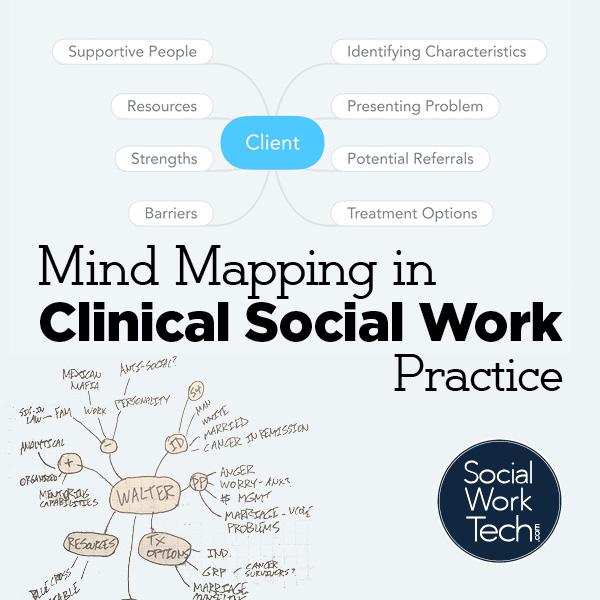After being asked to engage with my colleagues (and stop writing case notes on my iPhone) during meetings, I had to keep busy with pen and paper. A coworker then started talking about the most complicated case ever.
Seeing The Whole Picture (or as much as you can fit on a page)
Mind mapping is a method of writing down different ideas, grouping them together, and being able to go on tangents while still seeing everything written down.

Mindmaps are a way of organizing a lot of information at one time. It is tremendously helpful for analyzing a problem if you are a visual person.
In Clinical Practice
During case conferences, I’ll make a mind map to help me give feedback to colleague who wants to consult on a case. It helps to pass the time while training my brain to further analyze the various components of a case.

I use mind maps as often as I can when I have lots of variables that affect diagnosis, treatment, and decision-making in clinical practice.
Components of a Clinical Mind Map
The fun part about making a mind map is that you can branch out with whatever you need to talk about or analyze. It doesn’t have to follow any specialized outline.

To make a mind map, you start at the center– in this case, our focus is on the client. Then I branch out to the big themes that play into the client’s current status, which may include:
- Identifying Characteristics
- Presenting Problem
- Treatment Options
- Resources
- Potential Referrals
- Strengths
- Barriers
- Supportive People
Those are some of the basic components to help you get started when making a mind map. When constructing one, if I notice a common theme, I’ll end up grouping them together.
For example, if a client has a specialized need or history, that topic in itself becomes it’s own branch with whatever relevant information I may need to see to fully inform next steps. Rather than place “suicidality” under Presenting Problem, if it is of significant prominence, branch with whatever other details I may need to reference.
Paper Rules Everything Around Me
The way that works best for me to make a mindmap is with pencil and paper. If you want to be a real badass, grab a pen and go nuts. There’s this zen-like experience that happens when a fine pen is dragging across a paper, while you are thinking about what your about to write down. With ink, you are making a commitment!

I don’t think it needs explaining that this is not a real client, but an analysis of the most popular anti-hero since Michael Corleone.
For me, I make mistakes and a pencil helps me to erase them and fix my groupings appropriately.
After I’m done, I can simply shred the paper and move on with my life.
The Joy and Flexibility of the Digital Mind Map
There are different types of programs he can use to make a mind map, and they are pretty easy to use and can generate a nice looking visual.

Mistakes are easily corrected by using your backspace button to delete a word or two, or your delete button to kill an entire branch. You can order around main topics as you please. You can select a subtopic, and drag it around to a different main topic or make it a main topic itself. I prefer dragging around topics on a regular computer with regular mouse, but dragging around with your finger on iPad isn’t hard either.
The drawback with using digital mind map is that you’ve got to be careful about not putting HIPAA-protected material on a server that isn’t HIPAA-compliant. There is mind mapping software that can live on your device without having to connect to the Internet.
Mindmeister
Mindmeister is an app but I love because it syncs across different platforms. I can start a map on my iPad, make edits on my iPhone at a later time, and then be on my work computer and continue working on the same map, which then will sync up to my devices accessing my Mindmeister account.
Clinically, I have used Mindmeister to help me with visualizing clinical concepts, social work theory, and diagnostic criteria to further help my understanding of what can be very complicated concepts.
I have a folder that is for work projects, and I have made mindmaps to outline the main points of a group I want to facilitate. I love using this software to help me visualize different blog posts or writing projects, which helps me be structured and organized.
I’ll be sure to do a full review of Mindmeister on a later blog post.










The mindmap is cute, and I will sound very old but how is this different than what we used to call an eoo-map?
I guess the two can be the same. I always thought of an ecogram as having more structure and an academic purpose, whereas this one is much more free-flowing, but both are clinical.
I am using the mindmap as a tool in my macro social work class and would love to talk with you more about it. OR have you video in a guest lecture and share. I love the way the mindmap helps us conceptualize our efforts and issues and really think it is valuable tool. This article your wrote was very helpful to students in my class. Please let me know how I can get in touch